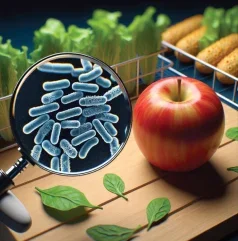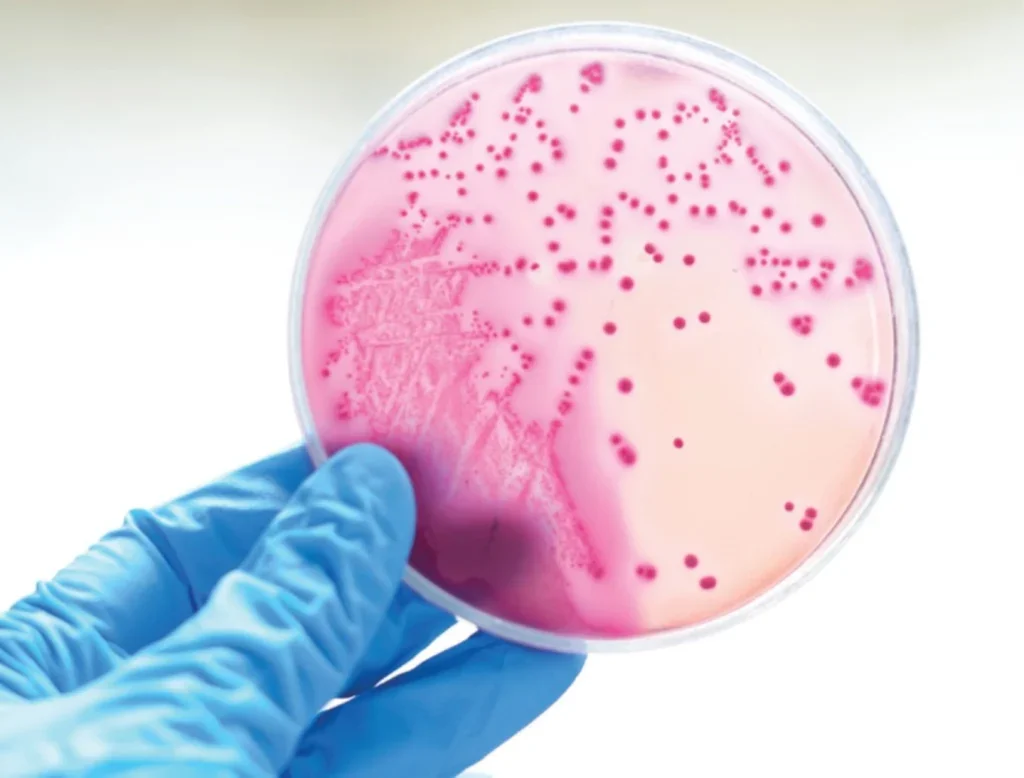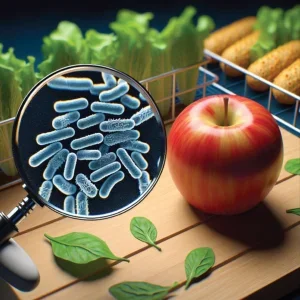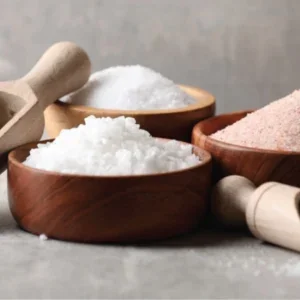
The previous summer saw an outbreak of Escherichia coli (E. coli) in the UK that caused at least one death and made 288 people sick, nearly half of whom were hospitalised. Investigations by UK health authorities found the source to be lettuce in prepacked sandwiches, which was contaminated with the Shiga-toxin-producing E. coli (STEC) O145. Possible causes include a failure to protect the lettuce crop from agricultural run-off, contamination of water or growing materials used in lettuce production or contaminated seeds, according to the UK Health Security Agency’s (UKHSA) report on the outbreak.
STEC lives in the guts of ruminant animals – such as goats, cows and sheep – and only causes harm when their manure finds its way onto food that is consumed by humans. Cross-contamination can also occur at the point of slaughter. Within the hundreds of variants of E. coli, STEC is a relatively new and poisonous kind that was first associated with outbreaks of foodborne illness in the 1980s. When it first emerged in 1982, the STEC serogroup 0157 was identified as the cause of foodborne illness from eating undercooked ground meat. Since then, 0157 has been found in leafy greens, unpasteurised milk, apple juice and salami.
But pathogens are living organisms that are constantly changing and evolving, and now experts believe new STEC serogroups could soon be rising up to take 0157’s dominant position. The UKHSA says, “Over the last decade we have detected changes in the types of E. coli that cause gastrointestinal infections in humans and outbreaks of foodborne disease. The serogroup of E. coli that was most common ten years ago is detected less frequently, and other serogroups have emerged.”
“It’s important that we work at every stage of the food chain to maintain good hygiene protocols, identify hazards and put in food safety chain protocols to prevent illness as food businesses must ensure the food they place on the market is safe.”
Narriman Looch, Food Standards Agency
And it is the cause of the previous summer’s outbreak – STEC 0145 – that appears to be taking STEC 0157’s place. “What we’re seeing from this group of E. coli is more diversity,” explains Dr Nicola Holden, professor in food safety at Scotland’s Rural College. “STEC 0157 has been with us the longest and used to be the most common, but it has been overtaken by other types of STEC in the last few years in England and Wales. In the last couple of years, in Scotland, we’ve been at the tipping point where 0157 is no longer the most dominant.”

Improvements in detection methods mean new serogroups and strains can be more accurately detected. However, scientists are investigating other factors causing the emergence of new strains.
“Something is going on with the biology of the STEC group of E. coli and we don’t understand why this is occurring. We can see evidence of evolutionary change within the organisms, but we don’t understand the basis of it. It’s keeping researchers very busy,” says Holden.
Herd mentality
As living organisms, pathogens will respond to human behaviour and the different conditions, scenarios and situations we impose on them – such as farming practices.
Some studies have suggested that switching cattle from their natural diet of grass to grain-based animal feed makes their digestive system more acidic. This change can create an environment that favours acidresistant strains of E. coli, including E. coli O157.
In a study published in the academic journal Science – led by Francisco Diez-Gonzalez at the division of Biological Sciences at US-based Cornell University – researchers found that cattle fed a grain-based diet had significantly higher levels of acid-resistant E. coli than those fed hay. A brief period of hay feeding was found to decrease the acid-resistant count.
Acid-adapted E. coli can survive the acidic conditions of the human stomach better than those from grass-fed cattle, which could increase the risk of infection when contaminated food is consumed.
Meanwhile, in their study ‘Effect of Cattle Diet on Escherichia coli O157:H7 Acid Resistance’ – from the Department of Microbiology, Molecular Biology and Biochemistry at the US University of Idaho – noted that fewer cattle shed E. coli O157:H7 when switched from a feedlot ration to a forage-based diet compared with cattle continuously fed a feedlot ration.
“Whatever you feed a living thing is going to influence the microbes that are already there and change the balance of some of the harmful microbes. Cattle can change some of their harmful microbes and not really get diseased. They’re happily carrying it but if you change the native microbiota that can shift the balance for some of the organisms present in the gut,” explains Holden.
“If some of the SETC bacteria are already present in the cow’s gut then the balance might be tweaked according to the microbes that occur from the feed. And if you supplement the diet with something that might affect methane production, for example, you’re changing the ecological balance within the gut.”
Outbreak
Other industry stakeholders have raised concerns about the possible link between the increasing use of antibiotics in intensive farming and instances of E. coli. After the biggest E. coli outbreak in history in 2011 – in which serogroup 0104 infected thousands of people across 12 European countries, resulting in 54 deaths – the WHO highlighted the use of antibiotics in livestock.
“In deciphering the E. coli strain responsible for the outbreaks, concerns have arisen that its antibiotic resistance might derive from widespread use of antibiotics in raising livestock,” the WHO said in its report, ‘International law and the E. coli outbreaks in Europe’.
On its World Health Day 2011, the WHO launched a campaign to reduce the use of antimicrobials in food-producing animals, claiming that the widespread use of antibiotics to promote growth and prevent disease in livestock was favouring the emergence and spread of resistant bacteria in both animal and human populations. Further concerns have been raised about the impact of climate change, which is increasing the numbers of flooding events, which move pathogens from places to ones they wouldn’t normally be.
Rest assured
So, when we’re dealing with a biological entity that responds so quickly to selective pressures, how do we ensure our food is safe? Good farm management practices and risk assessments are crucial, but quality assurance (QA) needs to happen at every stage of the supply chain. Narriman Looch, head of food hygiene and foodborne disease control at the Food Standards Agency (FSA), said: “It’s important that we work at every stage of the food chain to maintain good hygiene protocols, identify hazards and put in food safety chain protocols to prevent illness as food businesses must ensure the food they place on the market is safe.”
There are many tools and resources available to help food producers. To name but a few, the FSA offers a guide to hazard analysis and critical control point hygiene systems in meat plants, while the Food Standards Agency Scotland’s fresh produce tool helps producers with risk management plans – such as how to irrigate certain types of crops and manage the risks around contamination. At the next stage of the chain, the Chilled Food Association helps to bridge the gap between primary producers and retailers via processors and manufacturers. The organisation offers guidance on food safety and hygiene, as well as raw material controls and factory management for chilled food products.
Retailers need to work with the producers to ensure they have systems in place that meet their criteria. Major supermarket chains often have their own QA schemes but there are shared standards such as the Red Tractor scheme and the Global Food Safety Initiative. QA systems come at a price, obviously, which could be more punishing for the smaller players, such as farm shops. However, many of these are reporting new business from consumers who are concerned about mass-produced food. For example, Shropshire-based Fordhall Farm Shop put its meat provenance message at the heart of its recent online marketing campaign, which it says helped to increase sales by 12% in 2024.
“Our marketing message is all about provenance because our customers are looking for healthier sources of meat,” says tenant farmer Ben Hollins. “Our livestock only eat grass and our meat is all Pasture for Life certified. We don’t use proteins or concentrates.”
Nottinghamshire-based Welbeck Farm Shop claims to have attracted new customers on the back of the recent bad press for processed foods. The shop’s general manager, Oliver Stubbins, says public concern over ingredients such as preservatives, stabilisers and other additives in highly processed food is rising. He cites the introduction of Bovaer into some dairy farms and the resulting “huge uplifts” in milk delivery services as evidence of this.
“There’s definitely an increase in knowledge, concern and commitment to support farming from the general public. This provides a fantastic platform and opportunity to shift food culture and stop the loss leading and undervaluing of food we often see in supermarkets,” he says. “However, we must remember that many people in the UK are facing a cost-of-living crisis, and we need to acknowledge that there will always be a balance between ethical purchasing and affordability.”
54
The number of deaths from the 2011 outbreak, in which serogroup 0104 infected thousands of people across 12 European countries
WHO
Not only are minimally processed foods often more expensive, but they also bring their own level of risk too. The FSA says consumers can reduce the risk of most forms of food poisoning by following advice on the ‘4Cs of food hygiene’. These are: chilling, cleaning, cooking and avoiding cross-contamination.
We should always be questioning and taking responsibility for our food but what does ‘safe food’ really mean? It means food that won’t cause you harm, but that doesn’t mean it’s microbe-free because food isn’t sterile. It’s quite likely that it will have E. coli on it – but, most probably, not the dangerous variety.






